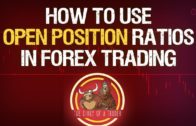Trading Toolbox – how to Use Open Position Ratios in forex trading
Do you want to know more about the perfect forex trading toolbox? Watch our latest video to learn how to use open position ratios and get profitable trading results.
Open Position Ratios Summary – A Powerful Tool
There are lot of different ways that traders will try to figure out where other traders are putting their money in the Forex markets, and without a centralized exchange, it turns out that it could be quite difficult. That being said, there are a couple of places online that you can freely look to find out where the overall attitude of participants is.
The one thing that you should keep in mind is that retail traders tend to lose. Because of this, you can look at these tools as a potential sign of what not to do, which in and of itself can be a great indicator. The first tool would be the Forex Open Position Ratios summary, which shows the long to short ratios of traders at the Forex brokerage firm Oanda. Now while it only measures the retail traders at that firm, it gives you an idea as to how retail traders are positioning their money. Keep in mind that retail traders almost always get it wrong or show up too late. As a general rule, going in the opposite direction will work out in the long term. That doesn’t mean that they always get it wrong, just that statistically speaking, trading against them works out. The link is https://www.oanda.com/forex-trading/analysis/open-position-ratios
Beyond the tools that you can find at Oanda, there is also freely distributed information at the CFTC. The CFTC, or the US Commodity Futures Trading Commission, the oversight arm of the US government, publishes a Commitment of Traders report every week. It comes out on Friday and gives you an idea as to how money is being positioned in the currency markets. Granted, this is in the futures markets involving currencies, but it gives you an idea as to how various players in the market are positioning. For example, I am looking at the Canadian dollar futures position for the week of March 13, 2018, and it shows how many noncommercial, and commercial traders are both long and short. It shows the change of interest in the contract, and the number of total traders. As a general rule, commercial traders tend to do much better. Nonreportable positions quite often are speculators and tend to be a sign of where not to be.



 Difference Between Hammer and Hanging Man 2023 [ Must Watch for Trader ]
Difference Between Hammer and Hanging Man 2023 [ Must Watch for Trader ]